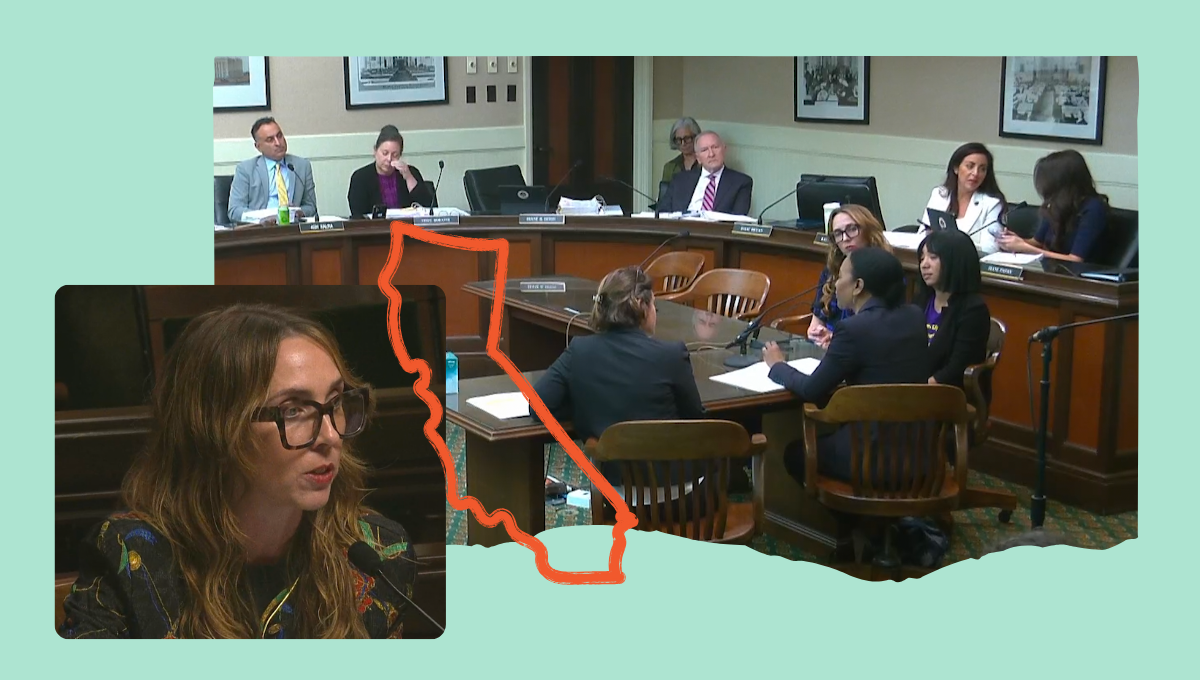A Broken Career Ladder: How Contract Work Hurts and Helps Worker Advancement

In previous papers for the Contract Worker Disparity Project, TechEquity Collaborative has detailed the working conditions facing contract workers in the tech industry, the role of hiring agencies in the contracting phenomenon, as well as how corporate and public decision-makers can support this growing workforce. In this paper, we turn again to the contract workers themselves to assess whether the opportunities that draw people to contingent work ever materialize.

Who are Contract Workers?
Contract workers are as diverse as their roles would suggest. They process text and speech to train AI systems, work as office administrators, drive the campus shuttles, work in facilities operations, manage personnel processes, advise public policy direction, and perform many other types of jobs. They come with backgrounds in customer service, academia, social services, conflict resolution, business, and more. So, how do people with such varied backgrounds all end up as contract workers?
Steps to Get a Contract Job
Practically, contract workers more often than not are recruited by contracting agencies. Someone who wasn’t necessarily looking for a new job gets a LinkedIn message offering employment in an aspirational industry. Some were recruited by agencies tabling on their college campuses. Others saw advertisements on social media. An agency’s ability to keep its contract with the tech company depends on how quickly and successfully it can supply the talent the company requires; they deploy significant resources into having an on-demand talent list.
The contract worker typically goes through a round of interviews with a combination of contracting agency and tech company staff before being brought on for a multi-month contract. While it’s not direct employment, it is a foot in the door at a company in a coveted industry.
“Staffing agencies just have all these open opportunities that are usually open-ended, even though the contracts are fixed. You kind of have an opportunity to get a feel for a company and not be tied to them. So I thought that was interesting at the time.” *
* Quotes are from interviews with contract workers. Names and company attribution have been intentionally withheld to maintain privacy.
Motivations for accepting the positions are as illuminating as how they’re hired. It’s common for current and former contract workers to be at the precipice of a career transition when the recruiter reaches out. Some are returning to the workforce from school or caregiving. Many report disillusionment with their prior line of work when a timely recruiting message or well-placed ad found them. Contract work presents an opportunity to try a new career path without a long-term commitment. It’s also a more accessible onramp for those likely to face discrimination in hiring.
Initial results from TechEquity’s survey indicate that contract workers are more likely to be Black, Indigenous, Latinx, women, and nonbinary than the overall tech workforce. Contract workers are more likely to be screened out of consideration for direct-employment roles than for contingent positions—just like the 1950s Kelly Girls on which temp practices were founded.
Despite the lower-than-industry-average pay, scant (if any) benefits, and short employment horizon, workers are willing to take a chance in hopes of converting to direct employment once they’re in as contract workers, or on being part of an industry and projects they can leverage in the future. It’s a gamble of a career transition that they hope will pay off.
Expectation vs. Reality
As outlined in previous papers for the Contract Worker Disparity Project, data on contract workers is challenging to piece together. Part of the problem lies in how existing labor data is collected. The Bureau of Labor Statistics collects information on workers by employer (in this case, the contracting agency), and by their roles—but not by the industry in which they work.
Papers including Silicon Valley Rising’s 2016 report on tech’s invisible workforce provide a more holistic picture, finding that Black and Latinx tech workers are far likelier to be in blue-collar contract roles (58%) than employed as direct employees (10%). Contracting in tech has grown and changed over the last six years and TechEquity sought to investigate workers’ qualitative experiences. To date, we have conducted 25 one-on-one contract worker interviews, received first hand accounts from 170 additional workers via surveys and emails, spoken with five tech companies, and heard from ten worker advocacy organizations. Many workers spoke on the condition of anonymity for fear of losing their jobs or being retaliated against.
Repeatedly, contract workers shared that they were excited to gain experience working in tech for its marquee companies; contract work wasn’t perfect, but it was a foot in the door. At the onset of their contract, workers reported looking forward to well-resourced projects, contributing to collaborative and ambitious teams, and informing the products and services so integral to modern life.
The White Whale: Conversion to Direct Employment
Despite it being a principally-cited reason that workers accept the contract job offer, 77% of those who spoke to TechEquity did not convert to direct employment. Converting from contract to direct employment is uncommon, sometimes by design. According to our findings, most contract workers were not explicitly told upfront that a conversion to a full-time position was unlikely, even though they took their contract position with the intent to become a direct employee. This was virtually unanimous in our interviews and survey data. Contract workers enter their roles aspiring to get hired on permanently, or if not, to benefit from being a part of a company with name recognition where they can learn new skills that provide a foothold into new fields. For many, those hopes are quickly dashed.
“[They told me], ‘yes, occasionally full-time roles become available.’ And they made it clear from the beginning there’s no guarantee, this isn’t a track to permanent from these roles. ‘You’re welcome to apply when they come about, but don’t hold your breath.’”
One of the few workers who successfully became a direct employee attributed their success to the happenstance of attending the same meeting as a powerful company executive early in their contract; seated next to each other, they eventually found out that the two did similar work early in their careers. When the contract worker directly asked about open positions, the executive asked for their resume. The worker sent it to the executive; though it was still over a year later, as the worker’s contract was expiring, they eventually secured a direct employment position.
“[The executive] also had previously done work to support [the issue I was working on before becoming a contract worker] and maybe they saw that on my resume and wanted to boost me up. Because I personally had no more or less relevant experience than other people.”
In the absence of company conversion policies, workers’ pathways into stable employment become interpersonal rather than structural, begetting the same homogeneity as the larger tech workforce. Some companies we spoke to admitted that they do not have conversion policies, purportedly so as not to unfairly favor the contract worker applicants.
Such corporate practice here can once again be explained, in part, by the delicate legal balance they must strike to employ contract workers. When two or more businesses co-determine or share control over a worker’s terms of employment (such as pay, schedules, and job duties), then both businesses may be considered to be employers of that worker, or “joint employers.” Joint employers are responsible, both individually and jointly, to employees for compliance with worker protection laws. (EPI, 2017)
Tech companies avoid, at all costs, being considered joint employers for contract workers. The contracting agencies are sole employers who ostensibly direct all elements of the contract worker’s employment. To avoid triggering a joint employer finding, corporate policies keep contract workers structurally isolated—without a clear manager, without a clear pathway into direct employment, without direct access to necessary resources and tools for their work— in order to limit company liability.
Companies duck the laws governing contract employment by creating arm’s-length policies for those workers; they also change their personnel practices altogether. If the responsibilities and daily tasks of contract workers are largely indistinguishable from directly-employed workers, that can also trigger a joint employment finding. To avoid that, some companies have phased out integrated teams—a mix of full-time employees and contract workers, which used to be common practice. Now certain core business functions are fulfilled entirely by contract worker teams, while others are done by direct employees.
“What I still don’t understand is the heavy contingent population versus FTE [full-time employees], just across the board. A lot of these contractor roles, there is a compelling argument why they should be FTE but I don’t understand why they’re being converted [to contract positions]. That’s something I don’t understand and I think it’s across the board in tech.”
HR employee who has worked for multiple tech companies
Leveraging Their Experience and Company Reputation
Left without meaningful advancement options at their contract roles, many remain hopeful that having a large tech company on their resumes, or experience in a highly skilled and competitive field, will give them a leg up in securing their next gig. But their ability to demonstrate their capabilities and experience is also controlled by the tech companies.
The majority of workers who spoke to TechEquity confirmed that they were not supposed to list or reference the tech company on their resumes or job applications. Instead, they were instructed to say, for example, Recruiting Manager for Pro Unlimited (contracting company) at Uber (tech company).
One worker shared that their contract experience actually put them at a disadvantage for direct employment opportunities. During the interview process for a full-time tech role at a different company, a hiring panel saw contract employment on their resume and pivoted to discussing other contract work opportunities, instead of the full-time position for which they had applied.
Told to downplay their connection to the tech companies, contract workers either comply and suffer the hiring disadvantages, or defy corporate instructions to gain some benefit from their work experiences. Many contract workers reported doing the latter. It’s a gamble with consequences: recruiters confirmed to TechEquity that those who decide to list the tech companies as their employers are passed over or disadvantaged for other contract work openings.
One Major Benefit: Translatable Work Experience
Of the three most common initial expectations—1. getting hired as a direct employee, 2. leveraging the industry’s reputation, and 3. earning experience they can apply elsewhere—contract workers report that the third expectation is the most likely to help them secure stable employment.
Despite receiving little to no on-the-job training, the immense responsibilities workers fulfill on the periphery of the tech workforce leave them with skills they can apply elsewhere.
Yet even that is hard-earned. Contract workers are often unable to present their work product, access necessary tools and documents, or demonstrate their abilities to company decision-makers. At large companies, contract workers reported that they had to ask a direct employee (any direct employee, not necessarily their tech supervisor) for entry to company intranet systems that housed work files. The policy that keeps contract workers from certain internal company meetings also leaves them unable to personally present their work to certain audiences. In this scenario direct employees are responsible for sharing their colleagues’ work with other teams, denying contract workers the opportunity to demonstrate their value and gain the visibility required for future conversion or career opportunities.
“As a [direct worker] you have full access to all documents, all the systems. As a [contract worker] you have to get these special—even though you’re doing the work and expected to do the work…we have to request special access for [contract workers] to actually do the work they’re required to do, because they’re treated different in terms of security for access to different technical systems.”
And yet, virtually all workers who spoke to TechEquity directly said they would recommend contract work to a friend—with disclaimers. Many wish they had understood that these are dead-end roles when they signed up. Others thought it was critical that contract workers understand how undervalued and separated they would be from their directly-employed colleagues.
Without evident and universal conversion protocols, stable employment depends on one’s ability to network with and charm those from whom they are structurally isolated. The de facto pathways from contract work to direct employment favor those who already have connections and commonalities with the existing tech workforce, in all of its homogeneity. Formalized conversion processes that look at work performance would help contract workers understand their likelihood of converting before accepting the roles and would make it more likely that diverse employees advance in the tech industry.
In the end, those who have moved on from contracting are often in roles that they enjoy more and earn more than before they worked in tech; it’s a stepping stone to better employment—with some company, if not the one that initially hired them.
Conclusions
Working conditions for contract workers are substandard when compared with their directly-employed counterparts at the tech companies. Evidence suggests that they earn less than direct tech workers in similar roles. They receive little to no benefits. Systemically and at the micro-level, they are demeaned, destabilized, and made to feel inferior to the direct workforce. Functionally, the most tangible benefit for workers to take these roles is to endure the substandard conditions and eventually parlay it into another, better job.
Contract workers face restrictions on how they can characterize their work and relationship to the tech companies, the dual management structure complicates their ability to have strong relationships with the tech managers who could act as a referral, and the rarity of converting to traditional employment is something that their direct-employee colleagues don’t experience. To the extent that contracting serves as a career onramp, the onus is on the job seeker to surmount the structural barriers that prevent a smooth transition to stable employment.
“Having equity, a bonus, a salary, regular increases—you know, none of that was the case as a contractor. You have no job stability. As a full-time employee, you have not just stability but a clear growth trajectory. That’s the expectation of most full-time workers. Their compensation will increase over time, there are bountiful opportunities to get promoted or to switch roles, to grow, to have training, to gain skills, to get mentorship. All of these things that aren’t—maybe sometimes they’re available to contractors, but it’s not the expectation.”
Opportunities to Fix the Contracting Glass Ceiling
The advancement policies of many tech companies have kicked out the middle rung of the contracting career ladder. Direct promotion is unlikely, and securing future work is made needlessly difficult. To support the professional development of the workers who power a large and increasing percentage of the tech industry, companies must:
End the gag order on contract workers
Contract workers shouldn’t have to choose between being competitive in the direct employment job market and being competitive in the contract work job market. Policies that instruct contract workers to downplay their relationships to the tech companies also artificially downplay their job competitiveness. Contract workers should not be penalized for directly naming their tech companies on job applications.
Systematize preferential hiring status for contract workers
Corporate policy should clarify that contract workers are subject to internal hiring protocols. In the absence of formal policy, support and success in conversion are dependent upon the goodwill of those with hiring authority, a practice that—in an industry known for its homogeneity—invites discrimination. Official guidelines will minimize the risk that unlawful favoritism results in disparate advancement opportunities, and create an equitable advancement pipeline.
Offer training and professional development opportunities
The shift to isolated, contract worker-only teams takes out another rung on the contractor mobility ladder. Opportunities to use skill learning tools specifically for skills unrelated to contract workers’ current assignments will support contract workers committed to certain companies to apply for roles that have not yet been outsourced as contract-only positions.
Adopt models from government agencies, and from tech itself
Companies can once again look to the public sector for equitable internal hiring policies. For decades, government positions have given internal candidates advance notice of upcoming employment opportunities, as well as condensed application and review windows. Applied to contract workers, public hiring processes would bolster the flagging contracting career ladder.
But companies need not look too far: existing policies demonstrate that tech companies understand the rationale behind internal referral systems, offering several-thousand dollar bonuses for successful referral hires. These policies, replicated for teams or managers who successfully hire former contract workers, would also improve the mobility and stability of tech’s growing worker class.
“I think just because they just cared about their contractors. At most companies I would feel the divide. ‘Contractors aren’t allowed to do this. This is just for FTEs’ or whatever… of course, there are still things that contractors can’t participate in, like All Hands. But my team…made sure they would brief me on the things I missed in All Staff…they just cared more and made me feel more included. I felt like I’m not just a worker, I’m a part of a team. I think I just got really lucky with my team.”
One contract worker on why their last tech company felt different
With these practices applied, tech companies can both pave the way for contract workers to secure stable employment after their contract experience and also diversify their directly-employed workers.





